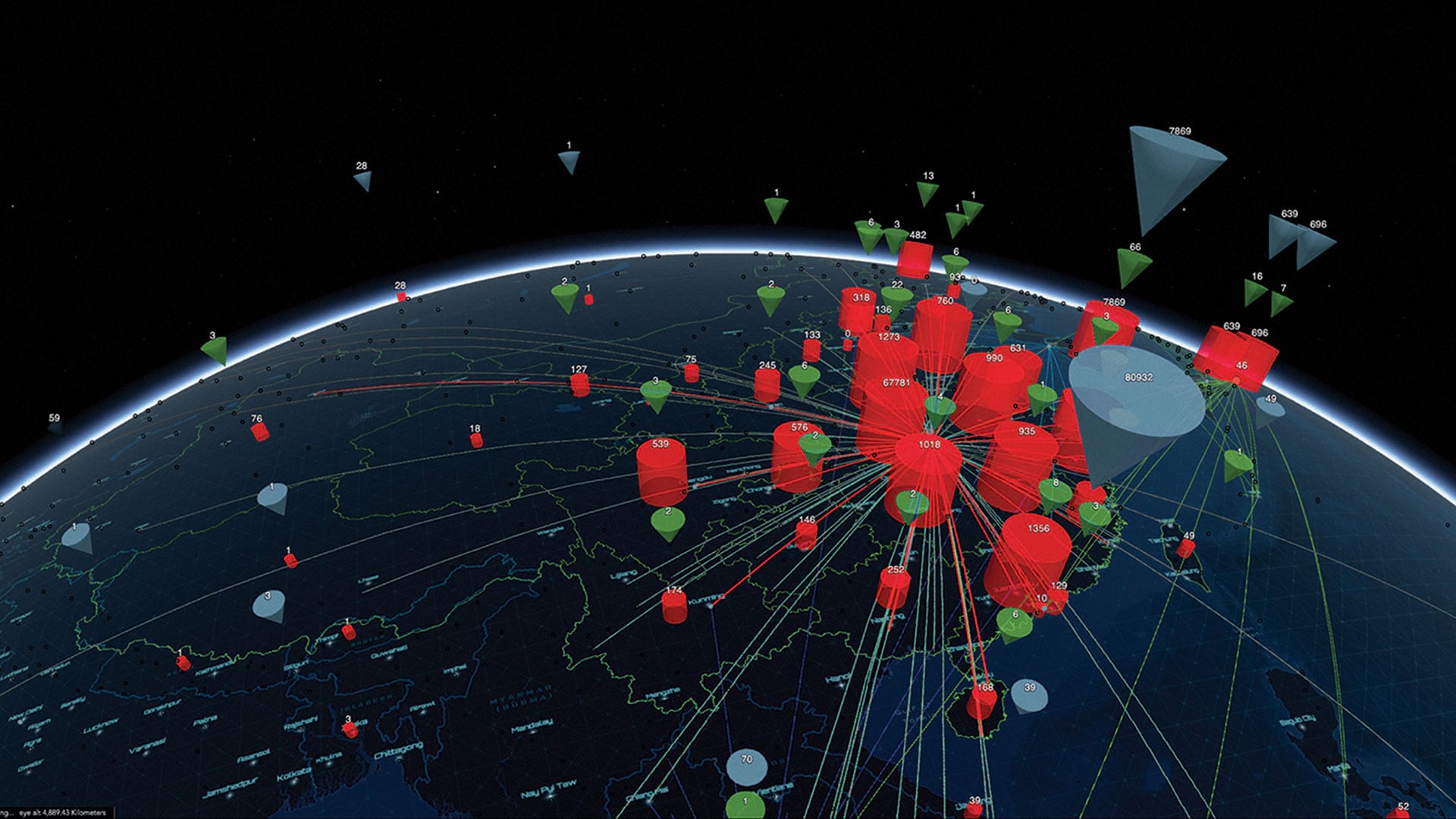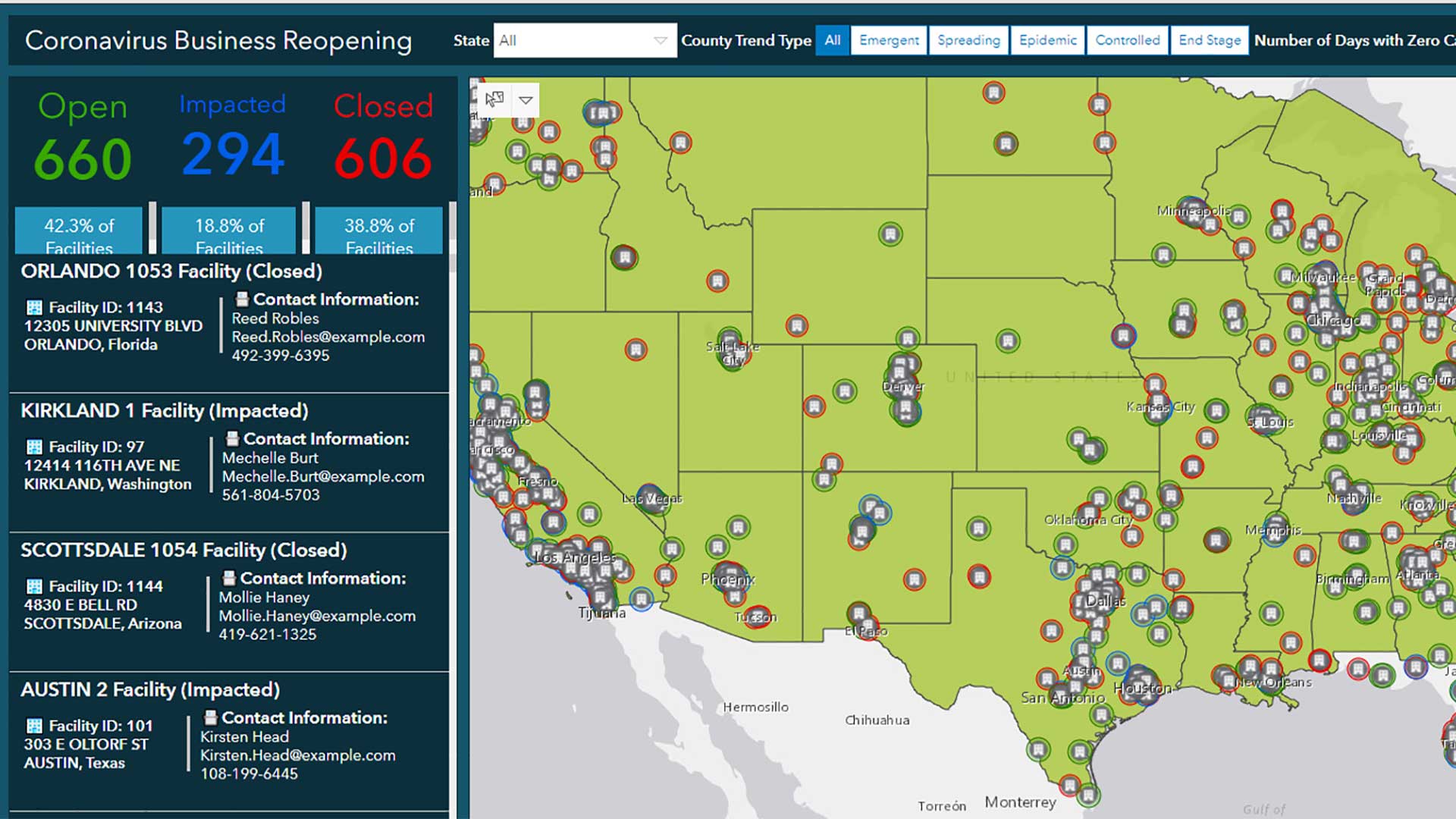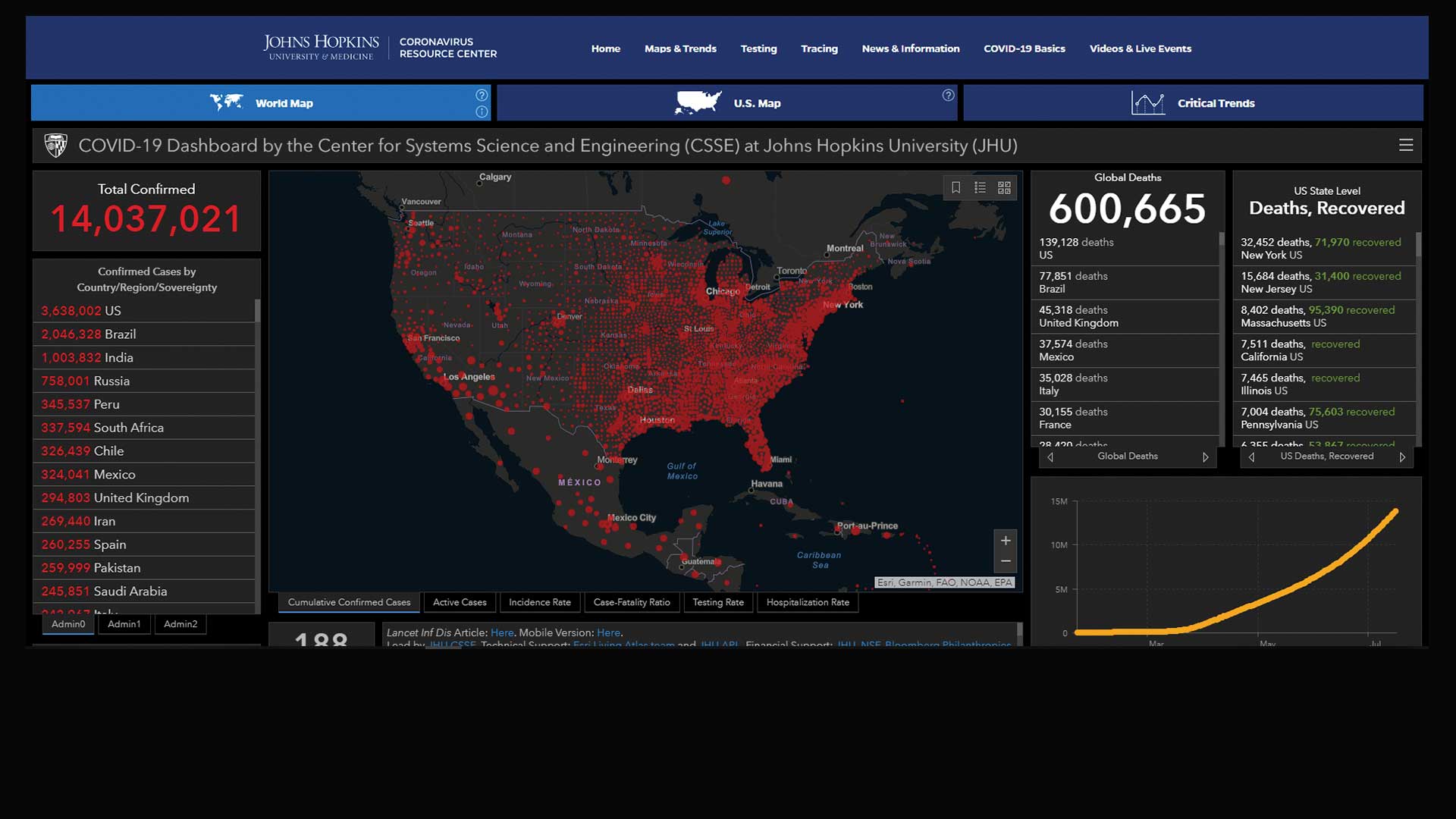In September 2021, as the tally of American deaths due to COVID-19 kept by the Johns Hopkins University Center for Systems Science and Engineering edged closer and closer to 675,000—the number of American deaths from the 1918 flu pandemic—thousands of small white flags fluttered in a 20-acre portion of the National Mall in Washington, DC.
Each flag honored a person who died of COVID-19 in the United States. This art installation, In America: Remember, was created by Suzanne Brennan Firstenberg as a space for collective grieving. Visitors to the exhibit, which ran from September 17 to October 3, 2021, were invited to write a message on a flag memorializing a loved one.
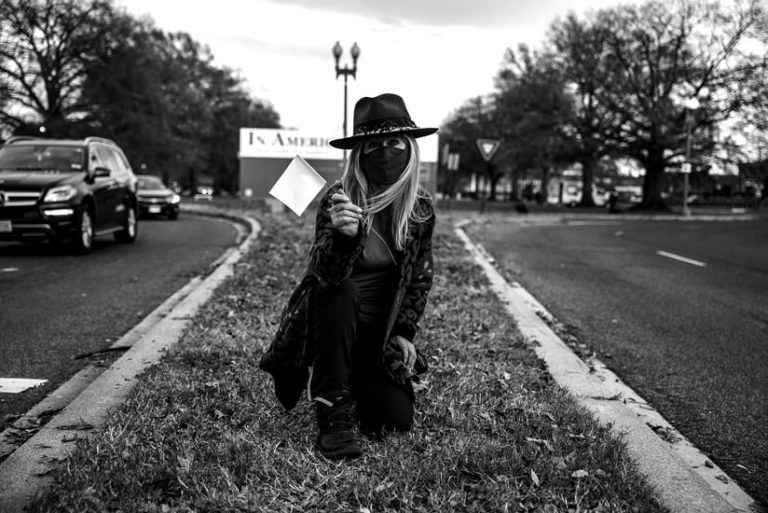
The exhibit was a way to remember the names and stories—not just the number—of those who were lost to the pandemic. While In America: Remember documented individual losses, the mass of fluttering flags testified to the overwhelming devastation of this national tragedy. At the beginning of the exhibit, the death toll was 670,032. Over the 17 days of the exhibit’s run, another 31,101 Americans died. By the exhibit’s end, Firstenberg and volunteers had planted 701,133 flags to commemorate every American who had died of COVID-19 as of October 3, 2021.
The National Mall exhibit was Firstenberg’s second installation of In America. Its initial installation of 267,080 white flags at the four-acre site at the DC Armory parade grounds adjacent to RFK Stadium during fall 2020 ran out of space due to the mounting COVID-19 death toll.
The more recent installation of In America has an added dimension. Those who couldn’t travel to Washington, DC, to dedicate a flag could participate virtually through the exhibit’s website at InAmericaFlags.org. By filling out an ArcGIS Survey123 form on the website, people could dedicate a flag and leave a message. Volunteers on-site wrote messages on flags, then planted and geolocated them. Flag locations and messages were displayed on In America: Remember Dedicated Flag Map, a web map embedded on the website.
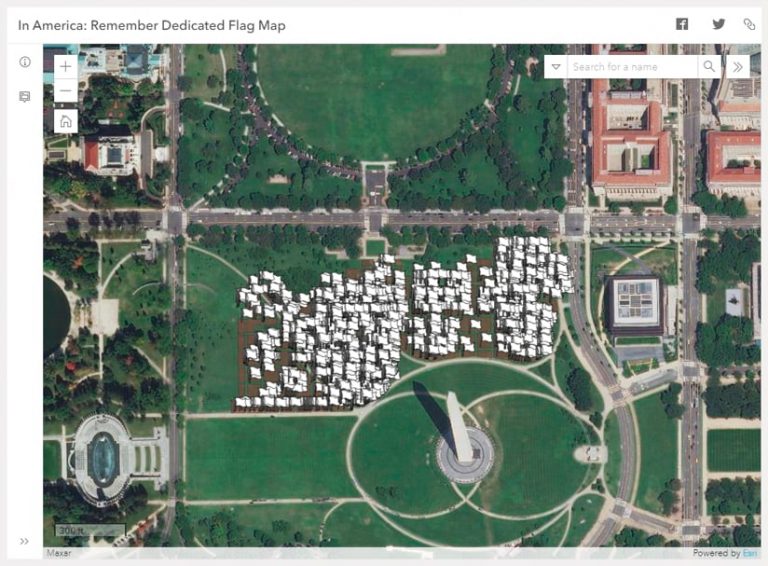
The online version of the exhibit was the product of discussions between Firstenberg and Sarah Wagner, an associate professor of anthropology at George Washington University (GWU). Wagner’s project, Rituals in the Making, studies how people are processing grief caused by losses during the pandemic. Since people cannot gather in person, the mourning process has moved to virtual spaces. This research is funded by a National Science Foundation grant.
In America: Remember is a physical space for mourning, and inamericaflags.org is a persistent virtual place to remember those who died and grieve their passing. While the exhibit at the National Mall ended on October 3, 2021, the online memorial remains available and displays the messages on flags dedicated by the September 30 deadline.
Many people came together to realize Firstenberg’s vision to extend the reach and impact of In America: Remember by creating an online memorial. The overall website was created by Maggie Peterson using ArcGIS Hub and ArcGIS Experience Builder. Peterson was an academic department administrator at GWU in the anthropology department, an on-call archaeology technician, and a geospatial consultant.
An ArcGIS StoryMaps story, In America: Covid Lost Loved Ones, displays information about individuals whose dedicated flags were displayed in the National Mall exhibit. This story, created by Jeremiah Lindemann, includes messages, memories, and photographs.
Lindemann, a solutions engineer on the Esri government solutions team, previously created a website memorializing the people who have died in the opioid overdose epidemic. He lost his brother, Jameson Tanner Lindemann, in 2007 to an overdose and built Celebrating Lost Loved Ones so that his brother and others would be remembered as valued individuals, not as people stigmatized by society.
The relentless uptick of the number of COVID-19 deaths, numbing the public to the personal cost of the pandemic, led Lindemann to work on Firstenberg’s exhibit and its online presence and to create a related online memorial using ArcGIS tools. He saw similarities in the public’s reaction to opioid and pandemic deaths and was moved to get involved.
“The dismissal of human life and lack of empathy was similar, and I thought it was worth telling these stories and investing the time in it. There was also a suddenness of lives being taken away and families not wanting their loved ones to be forgotten that just seemed similar,” said Lindemann.
Esri became a partner in the project. In addition to creating online maps, Lindemann built an ArcGIS Survey123 form to collect the information from people who wanted to dedicate a flag and leave a message.
Lindemann was involved in planning, coordinating work on the website, and supporting volunteers. GISCorps helped host, do initial work on the project, and supplied volunteers who approved flag submissions and helped with data for the site. (GISCorps is a volunteer-based organization that works under the auspices of the Urban and Regional Information Systems Association. It provides GIS services to underserved and developing communities around the world.) Wagner also recruited volunteers for the project from GWU.
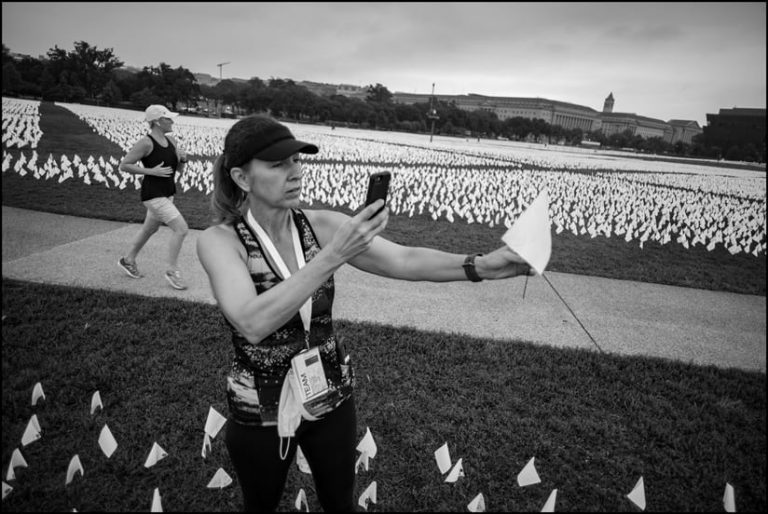
Este Geraghty, chief medical officer at Esri, was contacted about the project by Lindemann. She was involved in early brainstorming sessions on the site design. At the outset of the pandemic, Geraghty wanted to use GIS to help make the COVID-19 death data more provocative.
“The idea was to use data to tell stories and evoke more global empathy,” she said.
As the exhibit was nearing its opening, Geraghty created a training video to teach volunteers how to geolocate flags. During the launch, she was on-site to help kick off the exhibit and gave media interviews about the project. In addition, she geolocated more than 1,000 flags, memorializing those who died from COVID-19. She continues supporting the website, troubleshooting the geolocation process, and coordinating the Esri staff who support the site. Esri staff members Matt Thomas, Mike Schoelen, Jhonatan Garrido-Lecca, and others helped update the website, added volunteers, and added notification capabilities for people who made online dedications.
For those who visited the exhibit and gazed on the sea of white flags that stretched across 20 acres of the National Mall, the impact of In America: Remember was profound. According to Geraghty, she felt both overwhelmed and honored. “Being there allowed me to be a part of something bigger than myself. The moments we spent with grieving people were very sensitive. At the same time, it felt like a privilege to be let into someone’s life at such a difficult time.”
Although the last flag has been plucked from the installation at the National Mall, the spirit of In America: Remember lives on online at inamericaflags.org. Geraghty feels that GIS is effective in bringing people together. “It’s important in many, many ways. First, it shows data in a more understandable and more visceral way. It’s overwhelming and gives people a new sense of the tragedy of COVID-19 in America. The exhibit also gives people a voice.”
Through the exhibit and the website, those who are grieving feel their loved one can be seen. The isolation necessitated by the pandemic has left people without a sense of community to help them get through mourning.
“Because we can see these small bits into each other’s stories, I think it helps us all be more empathetic,” said Geraghty. “We’ve needed a way to have national mourning. I think the installation with the digital component increases inclusivity (you can participate from afar) and shows that technology, when used well, can be humanizing.”
Lindemann, who has worked on several GIS-based memorials, echoes Geraghty’s sentiments. “If we are going to live in a digital world, I think the human side has to come out.”

